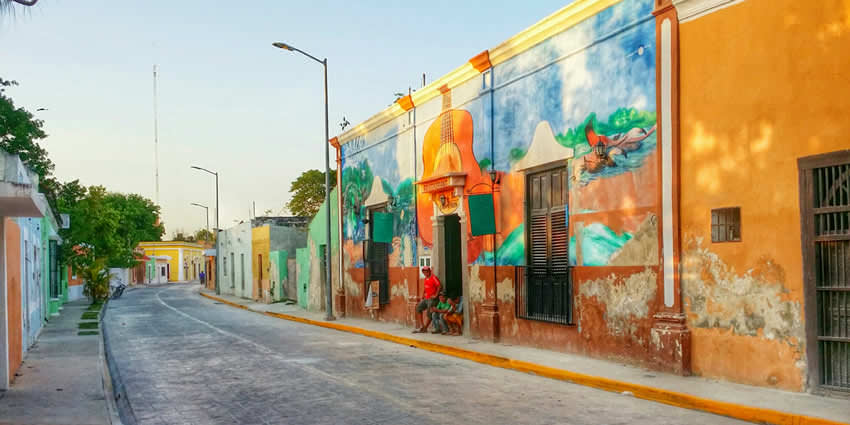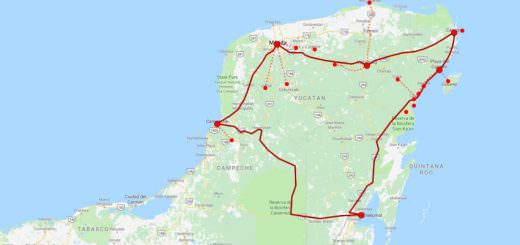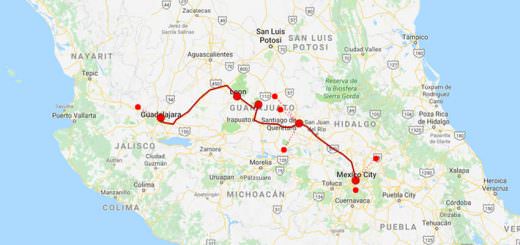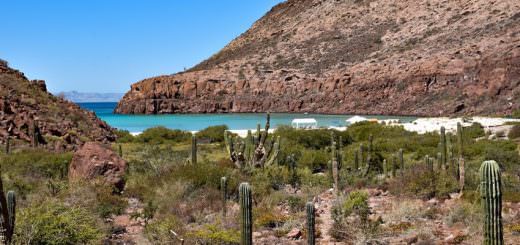
Celestún
Celestún is mostly a fishing town in the Mexican state of Yucatán. This coastal town is located in the northwest corner of the state, just north of the border with the state of Campeche, on the Gulf of Mexico coast.
Besides fishing, Celestún also produces salt, as it has done from pre-Columbian times. Tourism is also part of the town’s economy, as the community has many kilometers of sand beaches and abundant wildlife.
The coastal area boasts shallow, clear waters and is dotted with small islands.
The town is renowned for the Celestun Biosphere Reserve, known for the largest concentration of American flamingos. The reserve is home to numerous other bird species, making it a birdwatcher’s paradise.
Weather & Climate
Celestun has a tropical climate with distinct wet and dry seasons.
The weather is typically warm and humid throughout the year.
Dry Season (November to April)
This is the best time to visit Celestun.
During these months, the weather is dry and comfortable, with temperatures averaging around 27-29°C. This period offers ideal conditions for outdoor activities and exploring the natural beauty of the area.
Wet Season (May to October)
This period sees increased rainfall, with occasional tropical storms.
Humidity levels rise, and temperatures hover around 29-32°C. While the wet season can be less comfortable for outdoor activities, it contributes to the lush greenery of the mangrove forests.
The best time to visit Celestun
The best time to visit Celestun is during the dry season, from November to April.
This is when you can enjoy sunny days, pleasant temperatures, and clear skies. It’s an excellent time for birdwatching, exploring the flamingo habitats, and taking boat tours through the estuaries.
History & Timeline
The region was inhabited by indigenous Mayan people long before the arrival of the Spanish.
In the early 16th century, Spanish conquistadors began arriving in Yucatan. By the 17th century, the area of Celestun had become an established coastal settlement and was used as a port for trade and commerce.
In 1979 the Celestun Biosphere Reserve was declared a UNESCO World Heritage Site. This status was granted due to the area’s rich biodiversity, including the significant population of American flamingos.
The town
The town itself is a tranquil small fishing village, with traditional stilted houses along the coast. Celestún has a 19th-century lighthouse (as well as a more modern one) and an abandoned historic Hacienda.
One of the busiest times for tourism is Semana Santa when local Maya villagers from around the region visit Celestun.
Local folk-catholic traditions are abundant during the Holy Week when the town’s patron saint is floated out to sea surrounded by candles, and visited by the patron saint of nearby Kinchil.
As the town of Celestun is the seat of the municipality (municipio) of Celestun, it attracts various carnivals, dances, and musicians to its town square on a regular basis.
Ria Celestun Biosphere Reserve
Surrounding the town is the 600 sq km National Park of Mexican Flamingo (Ria Celestun Biosphere Reserve), a wetland reserve that is the winter home to vast flocks of flamingos, as well as many herons and other bird species.
This location is set within the Petenes mangrove ecoregion.
In addition, more than 200 species of birds pass through on migration or live there. Celestun’s ecosystem is unique because of a combination of fresh water from the estuary and saltwater from the Gulf of Mexico.
Ria Celestun Biosphere Reserve also has two types of pelicans – large white Canadian and smaller gray Mexican ones. Ria Celestun Biosphere Reserve is also known as a hatching ground for endangered sea turtles.
How to get there
All buses run to Celestun just via Merida.
- Buses from Merida (2:00 hours) run each 1 hour daily.
- By taxi from Merida (1:25 hours).
From Campeche City
- By taxi directly (2:50 hours).
Let us know if this article was useful for you





















